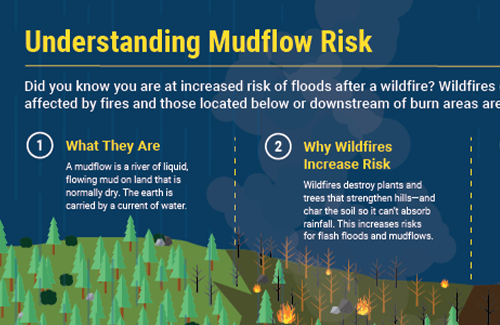Most residents are unaware that if they live in an area prone to wildfires, they have an increased risk of flooding. Use these talking points with clients, or potential clients, to help your community become aware of how flood risk increases following a wildfire.
- Fires alter an area’s environment. After a wildfire comes through, it leaves soil charred and unable to absorb water, drastically altering ground conditions. This leads to increased risk of flooding following heavy rains and flash flooding.
- Flood risk is increased. The damage from wildfires doesn’t stop when the fire burns out. The increased risk of flooding is increased until vegetation is restored, which can take up to 5 years after a wildfire.
- Flooding after a fire is often more severe. It takes very little rain to cause a flood or mudflows because of the area’s altered environment. Just one inch of flood water can cause $25,000 in damage.
- Flood insurance is the best way to ensure coverage. A typical renters or homeowners insurance policy does not cover flood damage. Flood insurance is the best way to ensure coverage in the event of a flood.
After a wildfire, it’s hard to imagine another risk ahead. But, it’s important to remind your community about their higher risk for flooding and mudflows in the years following a wildfire. Use these free NFIP marketing resources to connect with your community and explain to them how they can protect the lives they’ve built with flood insurance.

